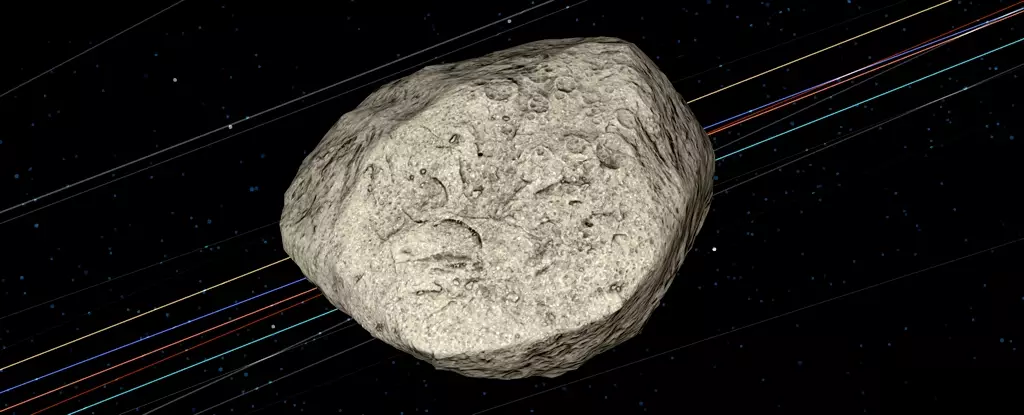In 2004, the astronomical community was electrified by the discovery of 99942 Apophis, an asteroid named after the ancient Egyptian god associated with chaos and darkness. Initial observations stirred significant concern as calculations suggested that the asteroid could potentially collide with Earth during its close approach in April 2029, leading to palpable anxiety among scientists and the public alike. However, further calculations have dispelled the notion of an impending catastrophe, asserting that Apophis will zip safely past Earth, within a mere 32,000 kilometers (20,000 miles) of our planet. Although Apophis is not a threat to Earth, emerging research suggests that a close encounter with our planet might have fascinating implications for the asteroid itself.
Asteroids in close proximity to Earth, like Apophis, display unique characteristics that intrigue scientists. They often possess surfaces that are less weathered compared to their more distant counterparts, showcasing loose, rubbly textures that offer clues to their active histories. Unlike the ancient, unblemished bodies we often investigate, these near-Earth asteroids bear signs of dynamic interaction. Planetary scientist Ronald Ballouz from Johns Hopkins University Applied Physics Laboratory has led research into how gravitational forces during a flyby can alter such asteroids, potentially rejuvenating their surfaces. These changes challenge long-standing assumptions that the surfaces of asteroids merely reflect their journey through the cosmic vacuum for billions of years.
To investigate the phenomena associated with the 2029 flyby of Apophis, Ballouz and his team undertook sophisticated modeling experiments. The precise shape of Apophis remains largely unknown, though data suggest it may be bi-lobed in structure—an asteroid resembling two objects fused together akin to 25143 Itokawa. Researchers drew parallels with Itokawa to build a base model asteroid and adjusted its parameters to simulate the gravitational impact of Earth during the flyby. Their insights revealed an intriguing connection: The gravitational interplay between Apophis and Earth could trigger numerous seismic events as Apophis approaches our planet.
As the asteroid speeds toward its closest approach, it is expected to experience surface accelerations comparable to those of its own gravity. The implications of such movements are significant; any detected seismic events would allow scientists to observe how the surface responds to gravitational influences in real time.
The immediate effects of the close encounter are only part of the story. The gravitational forces exerted by Earth not only disrupt Apophis temporarily but also have the potential to modify its long-term trajectory and spin. Researchers posit that such alterations in rotation could lead to gradual changes on the asteroid’s surface over thousands of years, rejuvenating it in a way that belies its ancient origins. According to prior research, the maximum distance for an asteroid to experience such rotational transformation during a flyby is about 102,000 kilometers—significantly further than the predicted close approach of Apophis. Thus, the likelihood of surface modification appears promising, making this flyby an especial point of interest for astronomers.
As scientists prepare for Apophis’ 2029 flyby, the excitement is palpable. Not only will this event provide an unprecedented opportunity for observation using ground-based instruments, but it will also offer a chance to gather detailed data about the asteroid’s behavior in near-Earth conditions. For instance, changes in Apophis’ spin can be monitored to assess the gravitational impacts in real time. The asteroid will be visible to the naked eye, enhancing its appeal as both a subject of study and an astronomical spectacle for skywatchers worldwide.
Although Apophis may not return with hostility like a mythological creature, the information it brings back from its transient brush with Earth promises to deepen our understanding of these celestial wanderers. As we brace for this close encounter, it is crucial to view 99942 Apophis not just as a potential hazard but also as a valuable opportunity—a reminder of the intricate interplays between celestial bodies and the forces that shape our solar system.


Leave a Reply